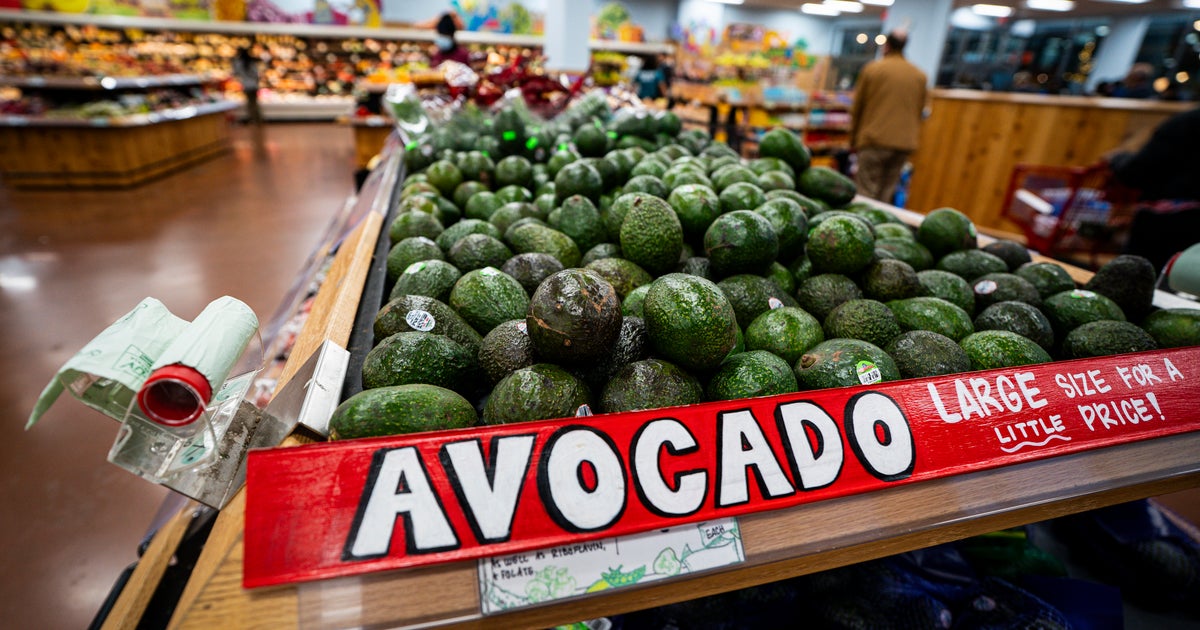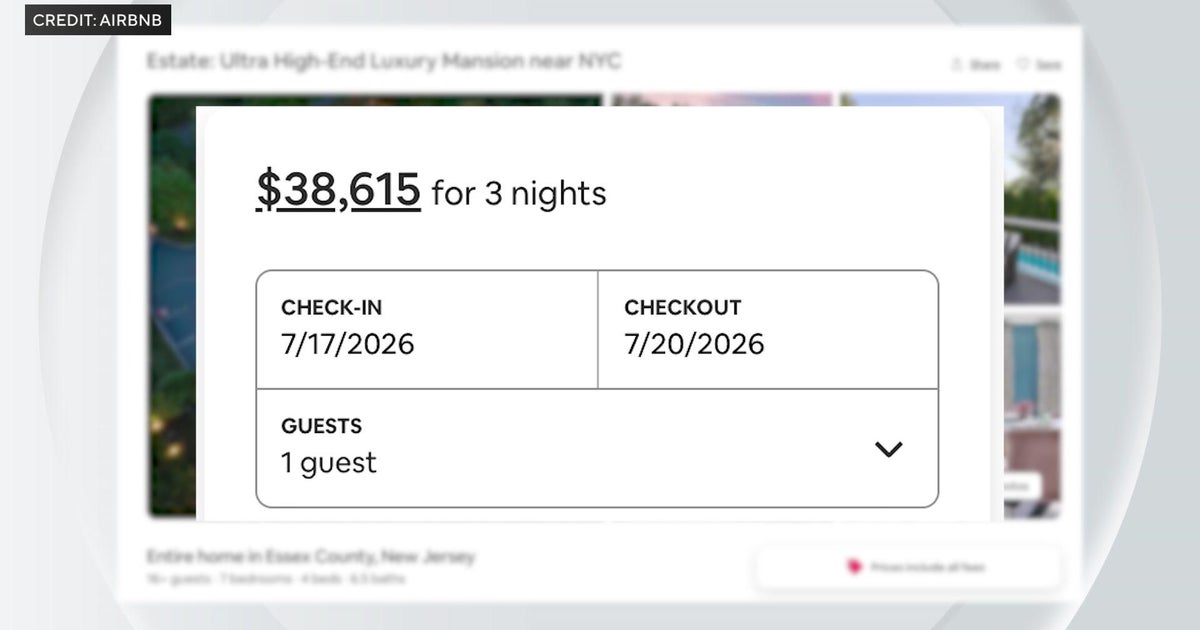Consumer prices are rising. Here's what's increasing the most — and why
Americans' wallets are on fire. With consumer prices last month rising at the fastest rate in nearly 13 years, some policymakers are worried that the hyperinflation of the 1970s is around the corner.
But there's little chance of that, most economists say. To be sure, today's price hikes are real: The cost of everything from lumber to food to airfares is climbing, while factories report shortages of both materials and workers. But many, if not all, experts say those increases are likely to be temporary, reflecting the economy's rapid reopening as the pandemic wanes rather than long-term supply issues.
"[T]he current rise in inflation will prove to be transitory," Societe Generale analyst Albert Edwards wrote Thursday in a report titled "Don't panic - just yet!" He added, "Investor worries about higher inflation will evaporate."
Reopening "all at once"
Most of the price hikes in April and May were for big-ticket consumer goods, such as cars, furniture and appliances. Just three main categories — used vehicles, new cars and trucks, and furniture — account for more than half of the rise in the price of goods since January 2020, according to Capital Economics.
In part, those price hikes are a function of timing. Most Americans, boosted by federal stimulus checks and tax refunds, are ready to spend, including for larger purchases they had put off during the pandemic.
Yet in many cases, inventories are low — there isn't a year's worth of unsold goods waiting to be bought. Factories closed last year, sometimes for months. Now that customer demand is surging, manufacturers are struggling to produce and ship everything.
"Supply-chain capacity right now is sort of overwhelmed," said Zac Rogers, an assistant professor at Colorado State University's College of Business. Last year, "because demand was so low for so many products, there wasn't that much that was produced."
Now that consumers are ready to spend, "everything got turned on really fast," he said.
What's driving up car prices
Vehicle prices have jumped not only because of pent-up consumer demand, but also because of an ongoing shortage of semiconductors, which are an integral component of cars and trucks. COVID-19 slowed production of these chips, most of which come from Asia. Automakers including GM and Ford dialed back production in response, while Tesla has raised the price of its Model 3 by $2,500 since February.
"Prices increasing due to major supply chain price pressure industry-wide," CEO Elon Musk tweeted last month.
Meanwhile, the slowdown in new cars rolling off the assembly line has driven many consumers to opt for used cars instead, pushing up prices for such vehicles to historic highs.vSince January 2020, prices for used cars and trucks have surged 29%. Rental costs have risen even higher — 62% above pre-pandemic levels.
Other raw materials used to make products are also getting pricier, further increasing the cost of finished goods. Aluminum, copper, steel and iron ore have all surged in price, with the Standard & Poor's Global Commodity Index this week hitting a give-year high.
Robust consumer demand for vehicles is trickling down to car parts and accessories. On Thomasnet, a business-to-business sourcing platform, searches for car parts and accessories have tripled from a year ago, according to CEO Tony Uphoff.
"For a lot of individuals, there's pent-up energy and they've been closed up too much, so we're fixing up our cars, putting a new set of tires on cars," he said.
Homes — and things for the home — rising, too
In May, the index for household furnishings and operations grew at the fastest rate since the 1970s. That reflects stiff competition for lumber, which is used to make everything from sofas and cabinets to the frames for new homes. Some furniture makers are seeing cost increases as high as 30%, according to Jo Ann Arrant, a representative for J Furniture in Amory, Mississippi.
"I've been in furniture for over years 30 and I have never seen anything like this," she told CBS News affiliate WCBI.
Record-high lumber prices, which have tripled from last year, are driving up the cost of homes themselves by an average of $36,000 per house, Rob Dietz, chief economist for the National Association of Homebuilders, told CBS MoneyWatch. For a new apartment, the price increase is about $13,000, which translates into an additional $120 a month in rent.
Appliances have also gotten more costly, rising 12% since last May. Prices for washing machines and dryers have shot up 26% from a year ago, and major appliance makers like Whirlpool have announced across-the-board price hikes.
The rising cost of raw metals, as well the semiconductor shortage plaguing vehicles, is affecting appliances, too. That's been exacerbated by delays in shipping finished goods to their destination.
"Appliances are in short supply — delayed delivery times, or no set delivery times," Dietz said. "Microwaves are in a container, and that container is not loaded off a container ship because it's waiting its turn at a dock in Los Angeles."
The NAHB reported in March that 90% of builders were having trouble getting appliances.
Dietz added, "Whether it's costing more or taking longer to arrive, we see scarcity or shortages in appliances, lumber, trusses, windows and doors, and in some cases the nuts and bolts."
Food prices edging up
Food is another category of spending where consumers may be feeling the pinch, largely because of increasing commodity costs. Prices for corn, grain and soybeans are at their highest levels since 2012, according to the Associated Press. That means higher prices on grocery store shelves and for a range of consumer products.
While food price haven't risen at the eye-popping rate of large consumer goods, they've increased 1.1% in the last four months, driven by the higher costs of meat, bread and dairy.
General Mills has said it's considering raising prices on its products because grain, sugar and other ingredients have become costlier, the AP noted. Hormel Foods has raised prices for Skippy peanut butter. Coca-Cola has warned of a price increase to offset rising costs. And Procter & Gamble is raising prices on a range of baby and personal care products over the summer.
Carmela Romanello Schaden, a real estate agent in Rockville Centre, New York, told the AP that her monthly food bill has swelled to $200 or $250, up from $175 earlier this year.
For instance, a package of strip steak that ordinarily cost her roughly $30 suddenly went for $45. She noticed the increase right before Memorial Day but bought the item anyway because it was for a family picnic. But she won't do it and will instead trade down to pork and chicken, Schaden said.
"I've always been selective," she said. "When something goes up, I will switch into something else."
Restaurants could soon follow with their own price hikes. This week, Chipotle Mexican Grill announced it was raising menu prices by roughly 4% to cover the cost of raising its workers' pay to an average of $15 an hour.
The Associated Press contributed reporting.





